January 26, 2022
This story was originally published by St. Stephens Indian Mission Foundation in VOL. XVIII APR/MAY/JUNE 1988 NO. 2. St. Stephens Indian Mission Foundation owns the copyright, and the story is reprinted here with permission from the Foundation. More information on the Foundation can be found following the story or by clicking on the link above.
Only the Rocks Last Forever
While the above statement may not be absolutely exact, it does hold a great deal of truth for mortal beings. Since the earliest time mankind has recorded on stone events they have seen, accomplished or envisioned. In some instances rock art is all that remains to mark the passing of entire civilizations.
In this issue we would like to share with our readers some of the stone treasures left by these ancient people. We will not try to translate or evaluate their meaning, because that information remains virtually unknown. In this presentation we feature three sites, two of which are definitely prehistoric and another site that is more recent and does have some legends which were handed down by the Shoshone and Arapaho people.
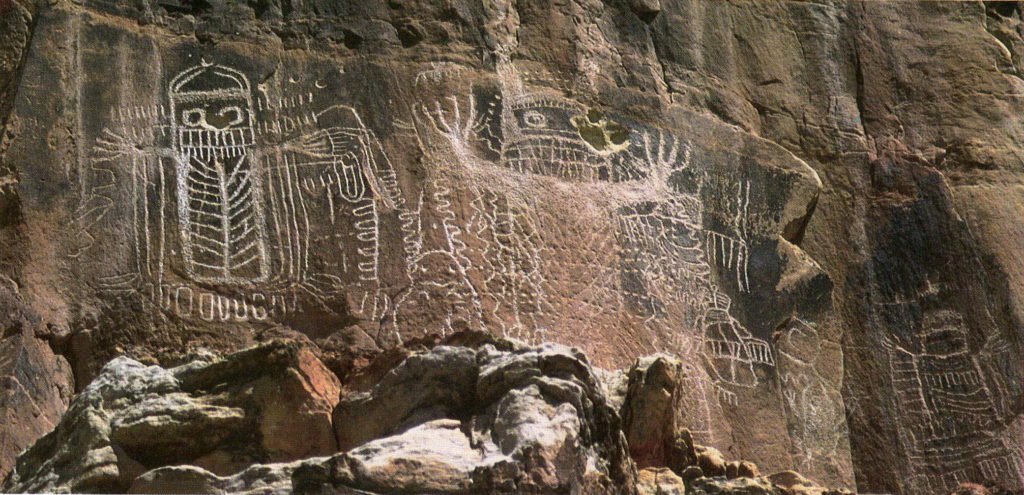
You may have seen documentaries or read about various ancient civilizations of the world that directed your attention to their major accomplishments. Although human beings have lived in central Wyoming for thousands of years, there are no formations or structures such as the pyramids built by the ancient inhabitants of Egypt. The early dwellers living in this region left their mark in a less conspicuous manner. The perplexing drawings etched on stone are a form of evidence that various civilizations inhabited the area. Many of us find it difficult to relate to the time-periods in which archaeologists deal with. We can only gaze in wonderment at the mysterious rock art as these skilled specialists work to prove various theories about the lifestyle of these ancient people. They did not live in central communities, developing sophisticated cultures; their lives were simple and being a nomadic people their possessions were few and moveable. The primary reasons for their mobile lifestyle was in conjunction with the changing seasons and with the availability of food. Following the migrating animals, which were their main source of existence, the inhabitants spent their summers in the higher country. With the approach of winter, the animals instinctively started their slow migration to lower valleys where water and food remained available throughout the winter season; and these early dwellers followed. These ancient people spent a great deal of time in the secluded valleys, for neither they, not the animals wandered far from their winter home.
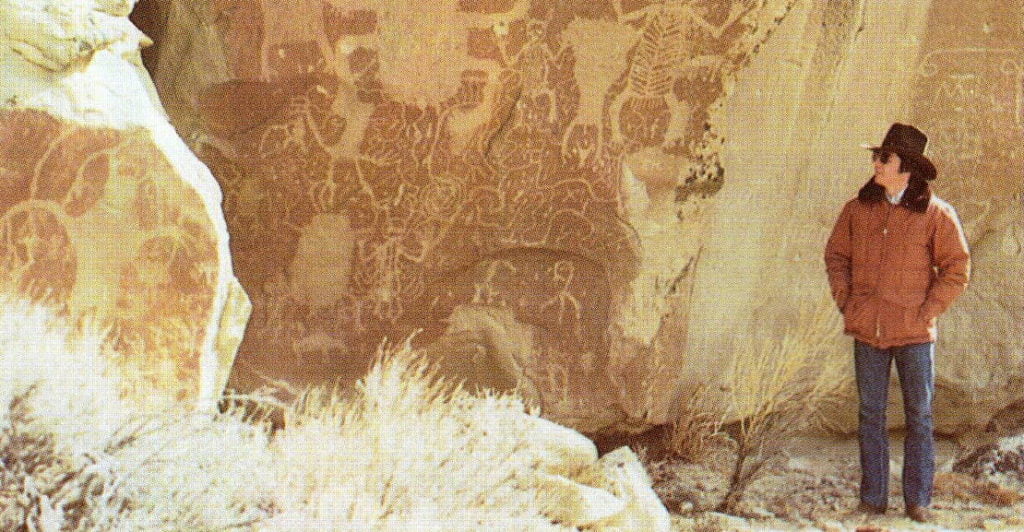
There are over 200 known sites of rock art in the state of Wyoming. A number of these are located within the Wind River Valley and the reservation. Although at first glance much of the rock art seems to be similar, each site has its own distinct style. Rock art itself can not be dated by modern means, but several factors and related data gathered from the site can be of some help in determining the era. Artifacts and campsites found near stone drawings can be dated, and thus, an idea as to when a particular region was inhabited is established. In some cases the dating process can correlate various sites and their inhabitants to similar sites in other parts of the country. However, when an archaeology site reveals that there has been continual use of an area for centuries, it is difficult for the archaeologists to determine which of the many generations and various cultures were the actual artists of the stone drawings. The style of some cultures can be matched or identified, but most of the rock art remain a total mystery.
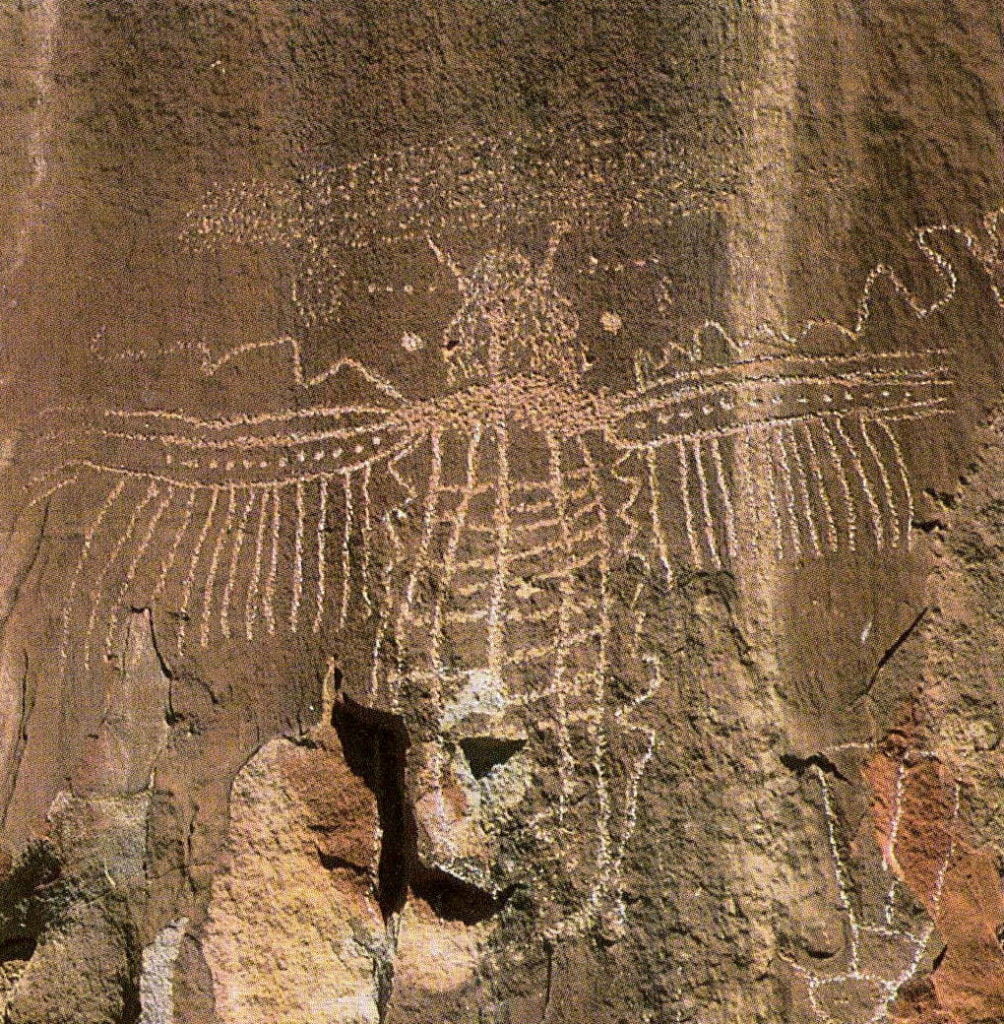
Early inhabitants of the area used two methods by which to leave testimony of their passing on stone — petroglyphs and pictographs. Petroglyphs are predominately found on and near the Wind River Reservation. These designs were incised, pecked or abraded onto the stone by means of a hammer and chisel long before iron tools were introduced to this area. The chisel was probably made from a harder stone, a bone or antler and the hammer was a rock. Pictographs are paintings on rocks and are found in several areas throughout Wyoming. Early inhabitants made use of natural minerals and plants to make their paints. Other natural colors were sparingly used, but two of the predominate colors found on pictographs in Wyoming are red and black. Black was made with charcoal and red was obtained from iron oxide. Animal fat was often the medium applied to carry the various color pigments, but water or even blood were also used. The porous surface of stone absorbed the color and resulted in a nearly permanent stain. There are a few sites where both petroglyphs and pictographs have been drawn. These early artists took pride in their endeavors and searched out sites that would best display their work. The location of many of these rocks gave the stone drawings a spectacular appearance and can be seen from some distance.
As one wanders through an area it becomes evident that a particular surface was more desirable to exhibit the artists work. Sandstone was used, although not exclusively, because of the relative ease in working on its surface. But many of the surfaces used are not perfectly flat or smooth. One type of sandstone used has a hard, dark outer surface, but when penetrated reveals a much lighter under-surface and the finished design results in a sharper image.
The style of the designs may vary in the same area and sometimes on the same surface, which could mean the area was inhabited by several generations or different cultures. In most locations human type designs are viewed head-on while animal figures are profiled. Some of the animal designs are recognizable and can be related to a particular species, while other figures are more abstract and left to the imagination. A number of designs, human in form — having bodies, a head, arms and legs — are quite elaborate and detailed. One noticeable feature is that many times the features will all have the same number of fingers and toes in a given area, while in another unrelated area the figures will all have another number of fingers and toes. But whatever the number it remains unchanged in that area. Of course there are a few exceptions.
In this region, the break between prehistoric and historic is considered to be around 1700. It was during this time period that tribes living in the area acquired the horse. The inhabitants had also recently mastered the skill of using the bow and arrow. Stone art portraying either of these features is believed to be a more recent account of history.
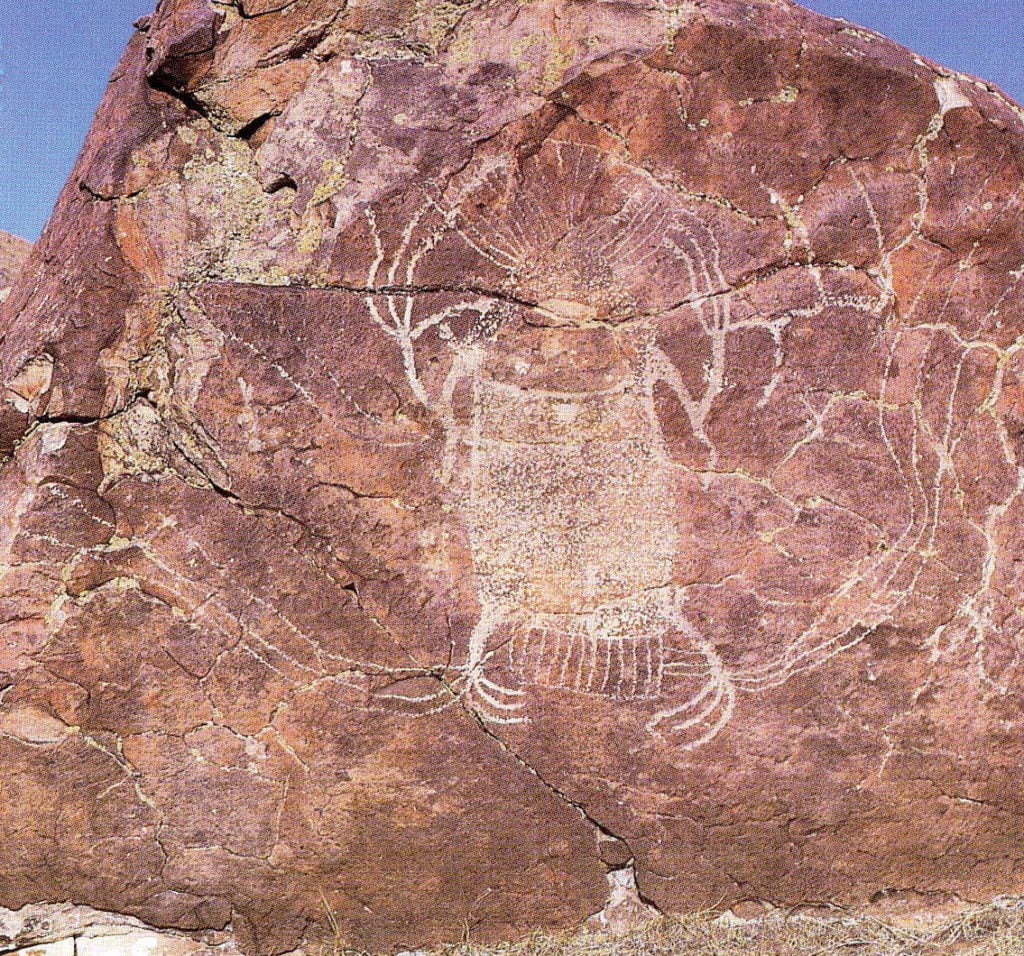
Some people believe that the stone drawings depict a complex mythological or religious concept, while others consider them to be recordings of personal events or dreams. In some locations animal figures might be a part of “Hunting Magic” — a belief that if a likeness of an animal being sought by a hunter is drawn on a rock, the animal will come to that area. The hunter could then secure it for use of his family and tribe. On the more recent stone drawings animals are shown with arrows piercing through them, which may be a recording of a particular hunt made by the artist or a member of his group.
Constant erosion with the elements of wind and water erases an unknown amount of these stone drawings. Rocks which have come loose and fallen over could also be hiding art which had been etched onto them. Even though some of the designs are being covered with lichen and are almost undistinguishable, a great number are still clear and bright. The harder sandstone deteriorates slowly and the petroglyphs exhibited on this type of surface will remain for a long time to come.
Petroglyphs at Torrey Creek…
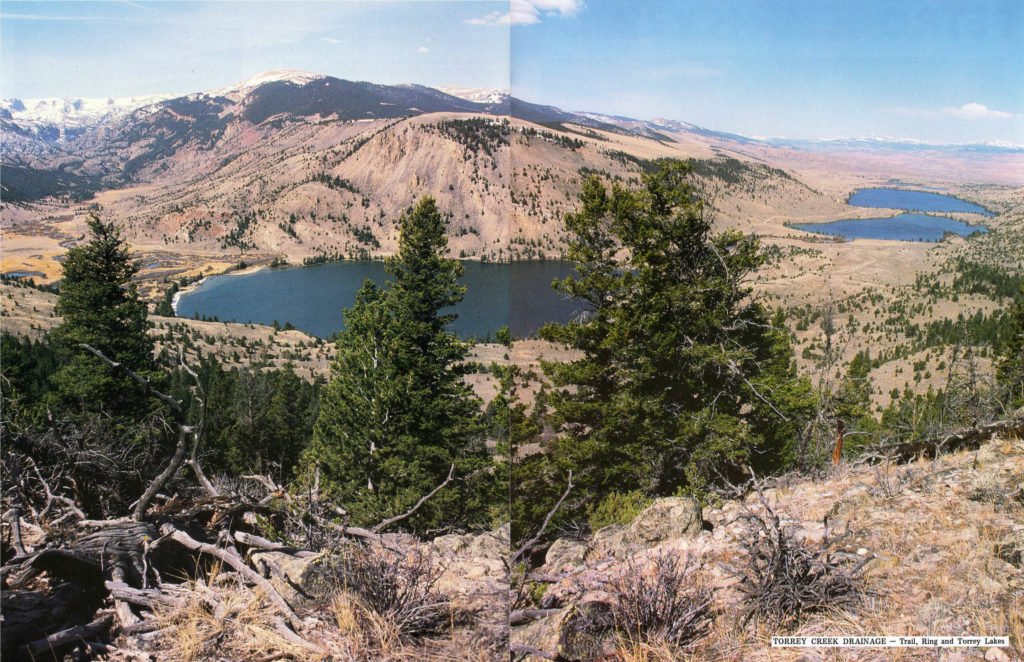
Torrey Creek is located a few miles from the town of Dubois. The drainage is not a major river, but it does empty into a close series of Trail, Ring and Torrey Lakes. The valley itself is only about six miles long, but mankind and wildlife have been drawn to this unique area for centuries. There are several factors that explain the reason for the continued use of this place. The elevation is around 7,500 feet and the climate is generally dry and cool in the summer. During winter season relatively little snow accumulates in the valley and the temperatures remain much warmer than regions located only a few miles to the north and to the south. Plant life existing in the Torrey Creek area is a combination of plants that are found in the lower northern plains and in the higher elevations of the Wind River Range. A number of these plants are edible and the seeds, nuts and saps are known to be used by both humans and animals.
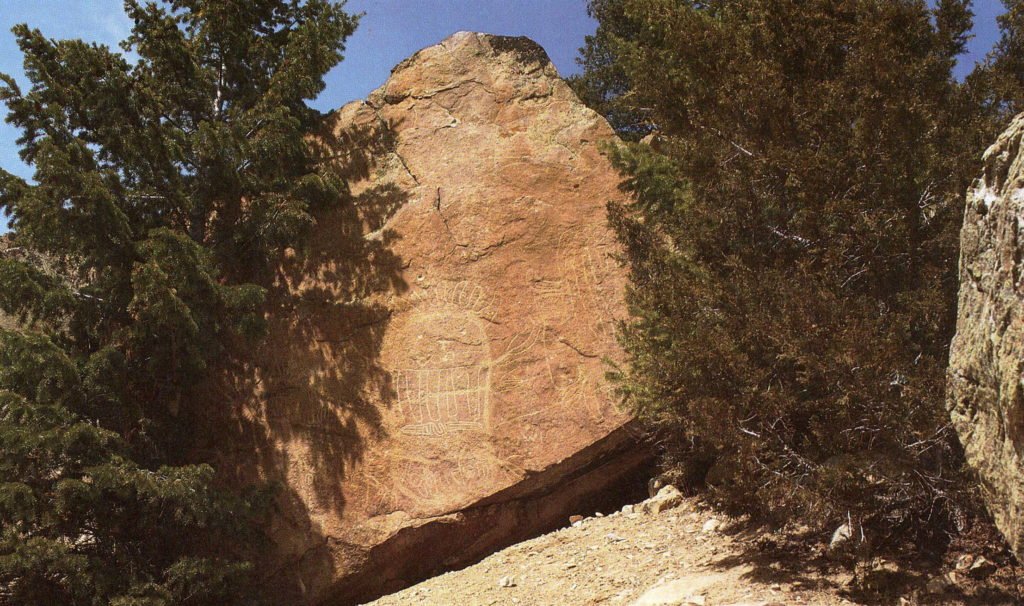
Archaeologists have found several prehistoric campsites and petroglyph sites near the three lakes. Some of the figures drawn on the boulders resemble four-legged animals. A great number of the figures are represented with feet and hands. These figures also have facial features and some appear to be masked. These sites have provided visible recordings of prehistoric presence in the Torrey Creek area. It is believed that the inhabitants moved by way of a trail between Torrey Creek, over the high country, into the valley of the Gros Ventre River. There is a petroglyph site near the Gros Ventre River that is similar to the sites found in the Torrey Creek area. Along this same trail the discovery of a soapstone quarry shows evidence of a large amount of prehistoric work. This quarry and the number of petroglyph sites add to the theory that ancient civilizations spend a lot of time in this region, or that they returned again and again — possibly to winter with the herds of wild game.
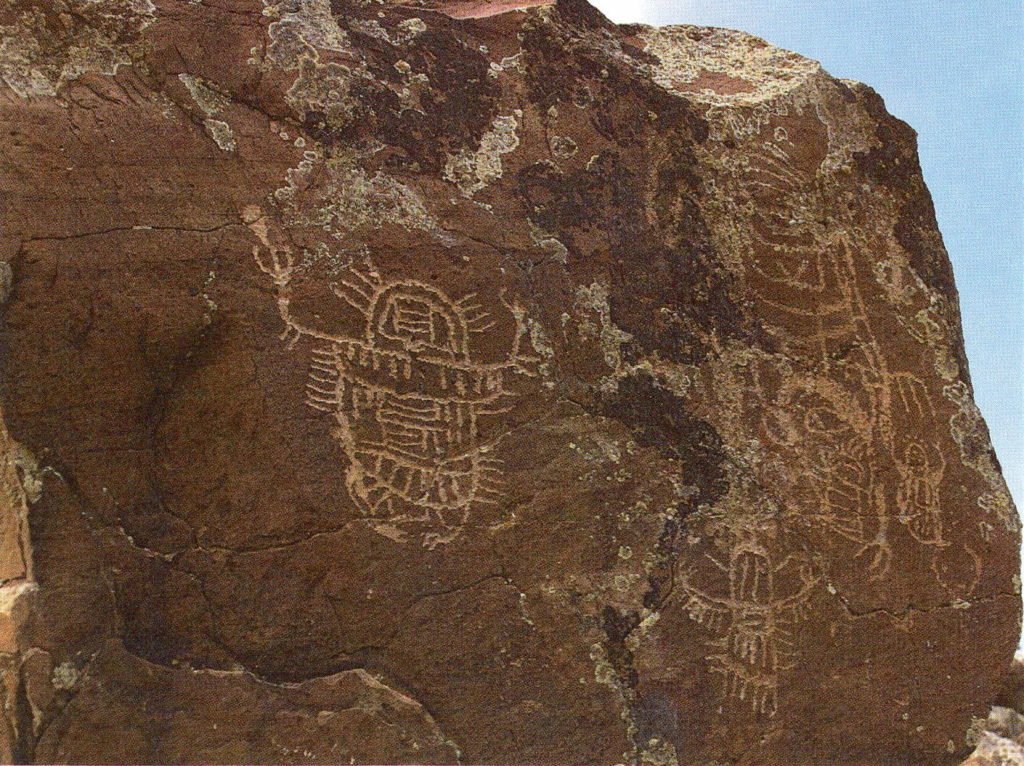
Mr John Underwood and his wife Lily lived a large portion of their lives at the mouth of Torrey Creek Canyon. Mr Underwood took an interest in the petroglyphs and studied them in great depth. In 1938, he wrote his anthropology thesis on, “The Petroglyphs of Torrey Creek.” Mr Underwood, a sensitive man, deeply appreciated the rugged beauty and the solitary grandeur of this remote area. Speaking about the region and its history, he once said:
“I imagine that even long ago this area might have been regarded as a sacred place. The legends of the early Indians about the little people, or dwarfs, of the mountain, and about the ‘water babies’ (mythical figures of magical powers) might point to this location. There’s the possible connection too with the belief in the power-giving through the created figures of the artists. In this elevated and secluded area, the early Indians seeking guardian spirits of shamanistic powers might well have pursued their intentness of supernatural communications. This might well have been a good place, a sacred place, for the concerned seeker to ‘make his medicine’.”
In more recent times, there has been an Ecumencial Religious Camp established at Ring Lake Ranch and an Audubon and University of Wyoming field camp set up at Trail Lake Ranch in the Torrey Creek Valley. Both camps afford a chance to reflect and appreciate the beautiful, peaceful surroundings.
Dinwoody…
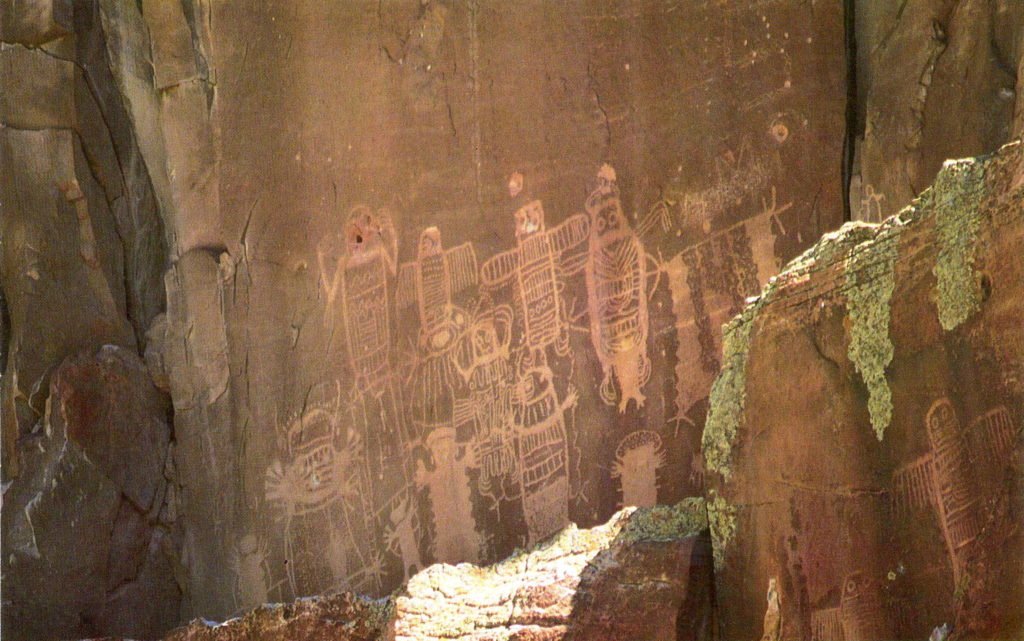
The Dinwoody River tumbles out of the Wind River Range a few miles southeast of Torrey Creek. The river originates at the base of glacier covered Gannet Peak — the highest point in Wyoming at 13,785 feet. Run-offs from several of the largest glaciers found in the lower 48 states feed Dinwoody River. The sediment in these run-offs cause the river to have a cloudy appearance and the short distance between the glaciers and the foothills of the Wind River Range cause the upper lake to also have a green cloudy appearance. But as the water flows into the second lake the suspended granite particles have settled and this mountain lake has a crystal clear blue aspect.
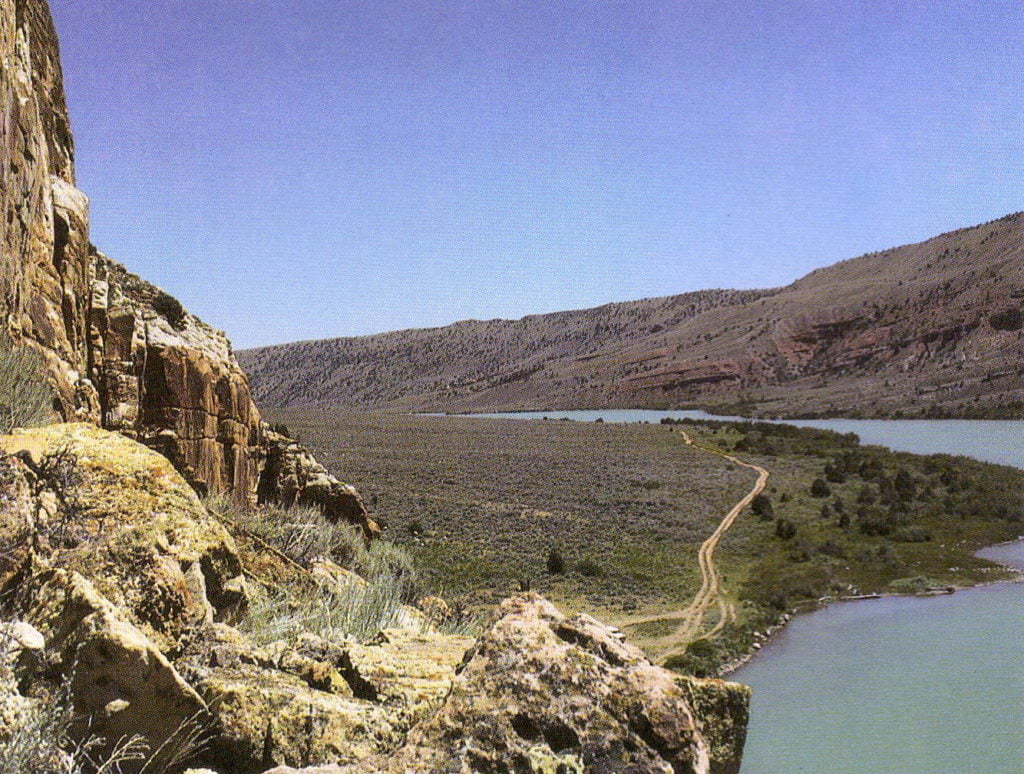
On the northern shore of the upper lake along the high red cliffs can be seen what might be the greatest collection of petroglyphs in the state. There are 11 main petroglyph sites in the Dinwoody area. These sites differ from the ones at Torrey Creek because the drawings are on cliff panels and not on individual boulders. The largest panel found in the Dinwoody area is 19 feet long and 8 feet high. The cliff panels contain numerous figures of complex design. Some of the figures overlap each other and other figures are joined together. Animals that resemble the buffalo and other wildlife that is still found in the area today are represented on these stone drawings. The figures range in size from approximately 6 inches to 7 feet in height.
The Dinwoody area is located on the Wind River Reservation and the elders of the Shoshone and Arapaho tribes relate that when their ancestors arrived the mysterious drawings were already on the cliffs. Archaeologists have been unable to find evidence of the tools that were used by the artists or to propose any explanation as to which ancient civilization made these designs or what these petroglyphs represent.
And Castle Gardens
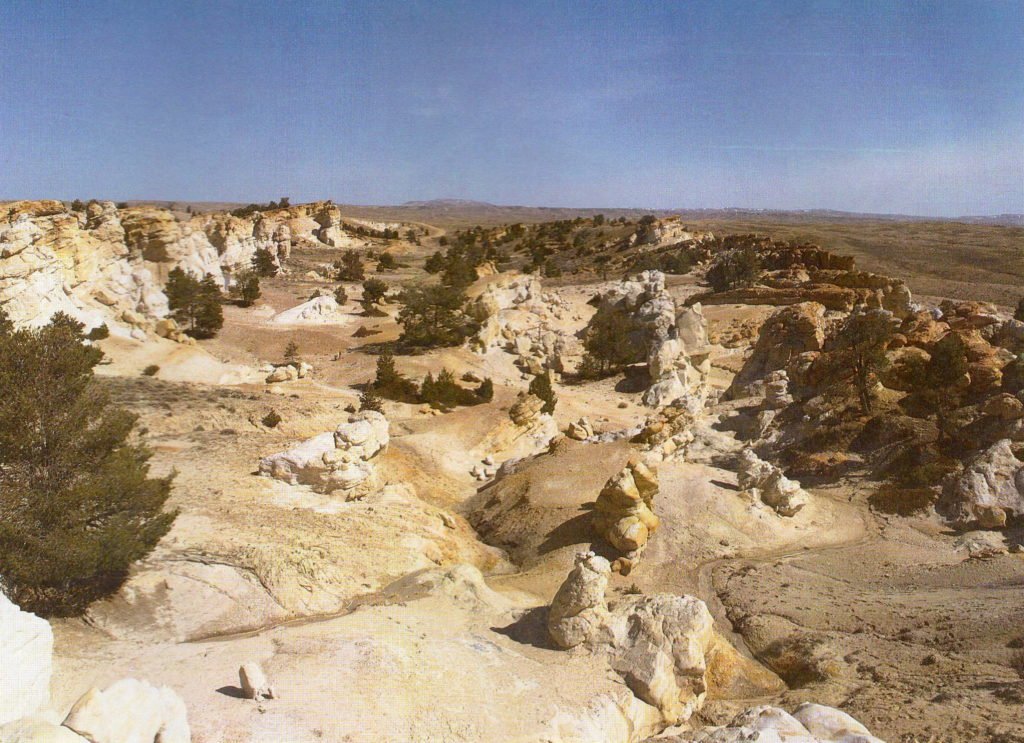
Castle Gardens is located about 50 miles southeast of St Stephens Indian Mission. Traveling across a treeless plain of sagebrush covered hills, one leaves the pavement and turns onto a dirt road that makes its way through this dry region. At the crest of a small rise in the road, a sign marking another turn-off reads: Castle Gardens 5 miles. The road winds across broken, desert terrain to reach the entrance of this rock art site. The stark whiteness of the rock formations carved by wind and snow, combined with a landscape of trees and bushes give the illusion of a castle surrounded by gardens.
On the face of the white sandstone cliffs, which are from 10 to 100 feet in height, a mile wide and 6 miles long, unknown artists have left petroglyphs and pictographs of many styles and types. Figures representing warriors, hunters, medicine men and animals such as turtles, buffalo, birds, deer, elk and mountain sheep are incised on these cliffs. But the best known type of stone drawing found in this area is the round shield figures. The shield figures are all about the same size, but have different interior designs. Often associated with shield figures is the design of a bear track, like depicted on the petroglyph pictured on this page that shows the figure’s garment covered with bear-track designs.
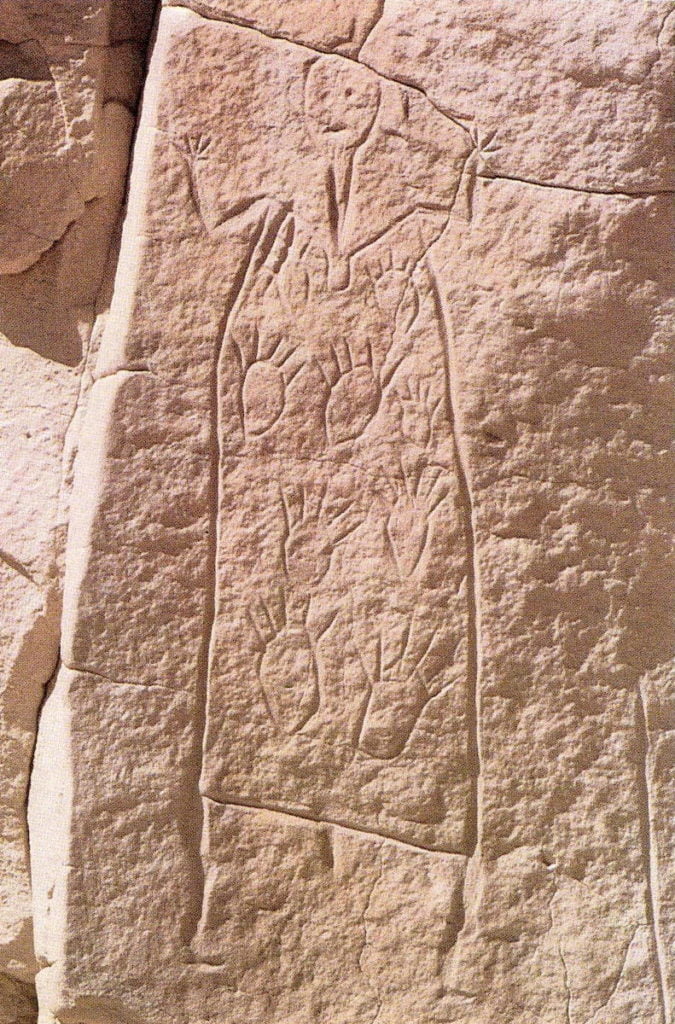
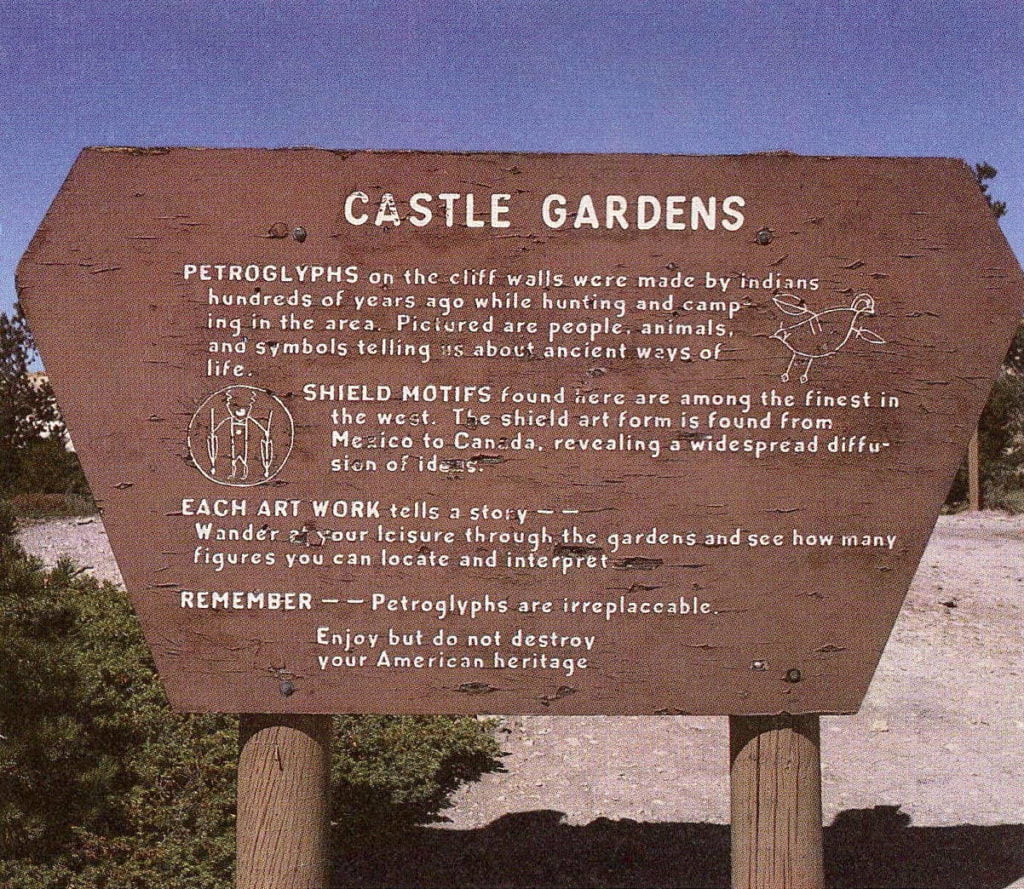
A figure of a turtle 42 centimeters across has been removed from Castle Gardens to preserve what is believed to be the most elaborate drawing in this region. The turtle was engraved and then painted in shades of green, orange-yellow and purpleish-red. The colors are assumed to have been derived from local minerals and plants. Other similarly colored figures have partially eroded away. This type of rock art is thought to be the most sophisticated on the Northwestern Plains.
Although these stone drawings remain a mystery, one theory refers to ceremonial or spiritual beliefs being the reason for this creative work made by ancient inhabitants of the area.
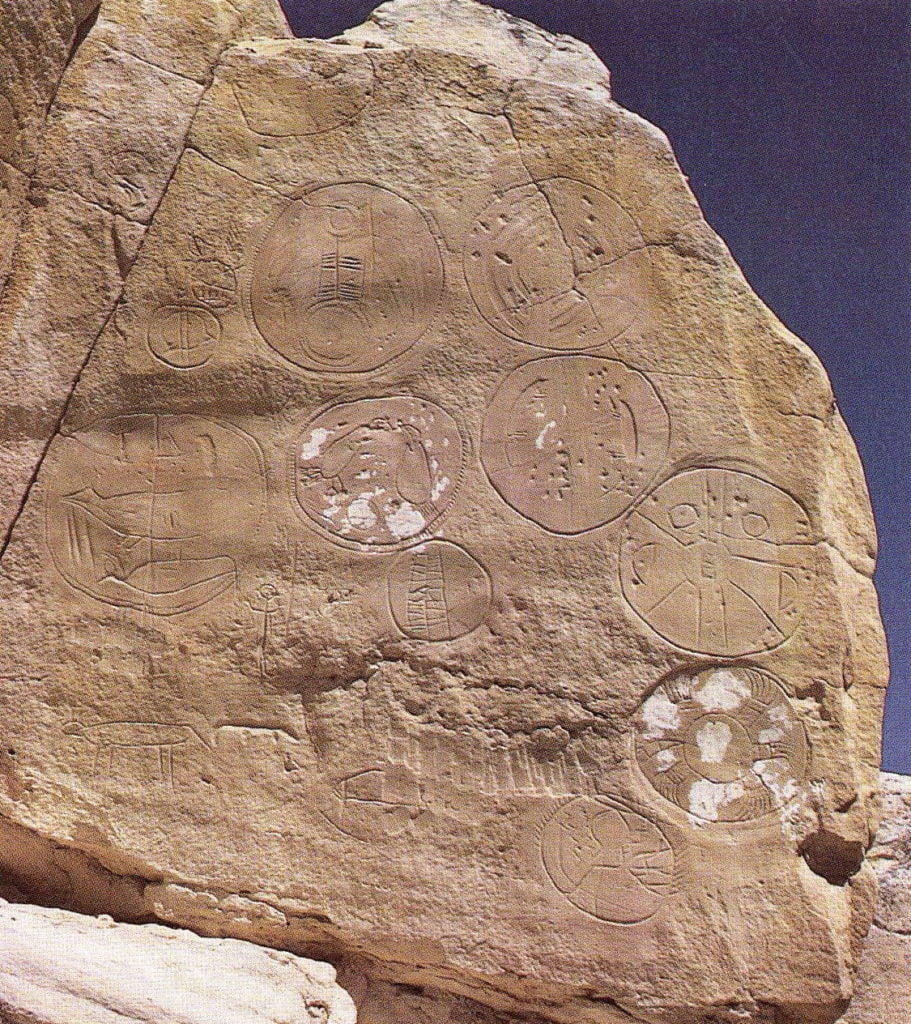
St. Stephens Indian Mission Foundation is a non-profit organization, incorporated under the laws of the State of Wyoming on March 31, 1974, and listed on page 184 of the 1993 OFFICIAL CATHOLIC DIRECTORY. The sole purpose of the foundation is “to extend financial support to St. Stephens Indian Mission and its various religious, charitable and educational programs and other services conducted primarily for the benefit of the Northern Arapaho and Eastern Shoshone Tribes on the Wind River Indian Reservation.”
Posted in Notes From the Field